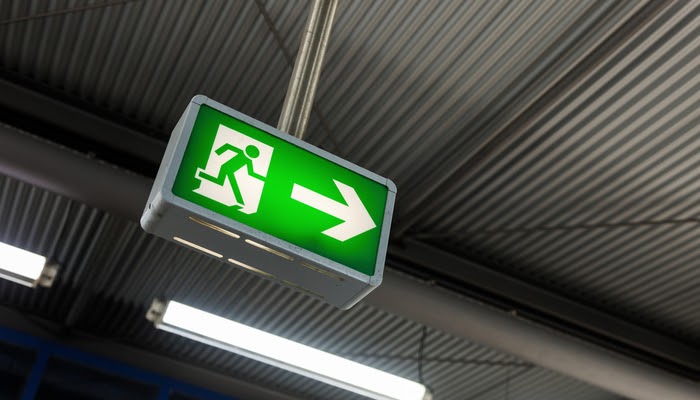Testing and maintenance of emergency lighting and exit signs are essential for workplace safety. Maintaining these units can be crucial for helping your personnel safely navigate to other work areas or outside in emergencies. Facility managers and supervisors should understand the role of emergency and exit lighting and the importance of testing and keeping these units in order.
Finding the Way Out
In an emergency, personnel and guests may need to find an exit or safe place within the workplace quickly. In the case of a power outage, visible exit signs and backup emergency lighting can help guide people throughout the facility.
The National Fire Protection Association (NFPA) mandates exit signs to be visible from no more than 100 feet or the listed viewing distance of the exit sign. The NFPA also requires these signs in all 'egress paths,' including ceiling height and continuous width. A lot of exit signs are lit by incandescent bulbs. As a business owner, you ought to consider an emergency and exit lighting that's internally wired into emergency backup power, which provides continuous lighting in the event of a power outage. However, internally wired backup power may not be available in many cases, so business owners should consider sources of readily available replacement batteries for any battery-backed units.
Testing and Maintaining
To properly maintain these units, business owners should consider these steps:
1. 30 Day Visual inspections - This inspection is done once every 30 days. Checking for loose or exposed wiring and securing it (frayed wiring is itself a fire hazard and loose wiring can be accidentally snagged and lead to further damage). Ensure that exit signs and emergency lights are securely mounted to the wall or ceiling. Look for any cracks or blemishes in the housing because cracked outdoor units may need to be replaced due to water seepage issues. Consider installing protective guards and shields to protect these units from physical damage.
2. Functional inspections - These units should undergo several functional tests on a monthly or yearly basis. These tests are created to check for damage to the lights' exterior and verify that the lights are functioning.
There are two types of testing mechanisms in most equipment: equipment that needs to be manually tested (i.e., by pushing and holding down the 'Test Button' on the unit) and equipment designated as 'self testing' (i.e., has built-in circuitry that can perform the 30 second monthly and 90 minute annual tests).
Manual testing equipment requires you to find the 'push-to-test' button that interrupts AC power and engages the backup battery. Exit signs should stay illuminated, and emergency lighting should turn on. Hold the button for 30 seconds, observing that the illumination stays on for the full 30 seconds.
Self-testing equipment is ideal for facilities with a large number of units. It has a 'push-to-test' button and a diagnostic LED that illuminates to convey test results. The button should be pressed two times to activate the 30-second test. After a while, examine the LED tell-tale. Steady green indicates normal service, while red indicates a failure of some sort. You can also set the units to perform a 30-second battery test every 30 days automatically.
3. Record Keeping - Keep written records of testing and maintenance for further review. For any unit that was not tested, document the unit's location and a reason for the lack of testing.
Conclusion
In the event of an emergency in your facility, would your personnel or guests know where the nearest emergency exit would be? Making sure your personnel and visitors feel safe in your facility is extremely important.
Keep written records of visual inspections and tests using effective solutions like The Checker.




